Granite countertops are a durable and stylish feature that has become popular for enhancing kitchens and bathrooms’ aesthetics. Known for their natural beauty, granite surfaces come in a variety of colors and patterns, making each countertop uniquely appealing.
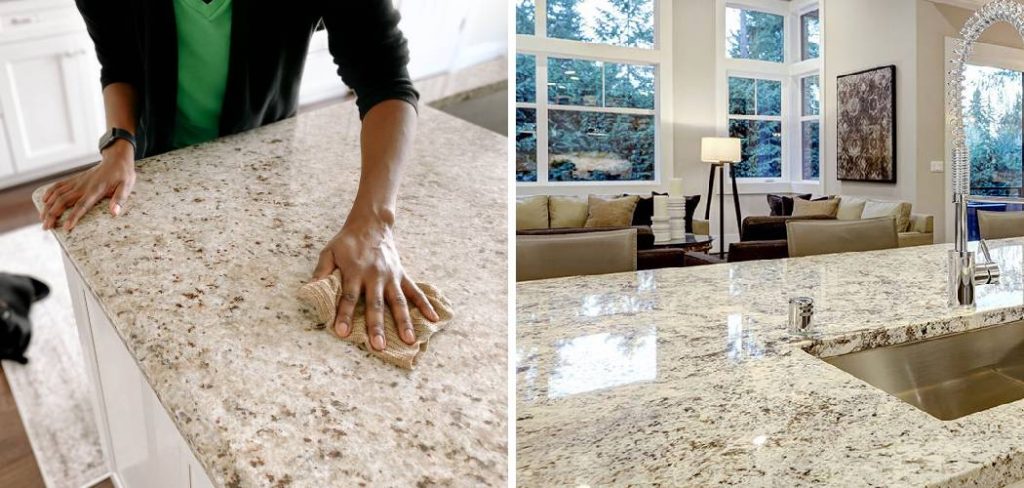
However, while granite is highly resistant to heat and scratches, proper care is essential to maintain its elegance and prevent long-term damage. Understanding how to maintain granite countertops is key to avoiding stains, scratches, and dullness while keeping the stone’s surface in optimal condition.
This article provides a comprehensive step-by-step guide to cleaning, sealing, and caring for granite countertops, ensuring they remain as stunning and functional as the day they were installed. By following these tips, you can preserve the natural beauty and long-lasting durability of this timeless material in your home.
Daily Cleaning Routine
Use a pH-Neutral Cleaner
Avoid acidic or harsh cleaners that can degrade the sealant on your granite countertops. Instead, opt for a gentle pH-neutral solution, such as mild dish soap mixed with warm water. Apply the cleaner with a soft microfiber cloth, which is effective at removing grime without causing damage to the stone’s surface.
Wiping Down Countertops
Clean spills immediately to prevent stains, especially those caused by acidic substances like citrus juices, wine, or coffee. These types of liquids can penetrate the surface if left unattended, affecting the countertop’s appearance and durability. After cleaning, dry the surface with a soft, lint-free towel to prevent water spots and maintain the stone’s polished look.
Avoid Abrasive Materials
Do not use scouring pads, steel wool, or harsh brushes on granite countertops, as they can leave unsightly scratches or wear down the sealant. A gentle scrubbing motion with a microfiber cloth should suffice for particularly stubborn spots, ensuring the stone remains unscathed and flawless. Following these simple steps will keep your granite countertops looking pristine and protected from daily wear and tear.
How to Maintain Granite Countertops: Deep Cleaning and Stain Removal
Using a Baking Soda Paste for Stains
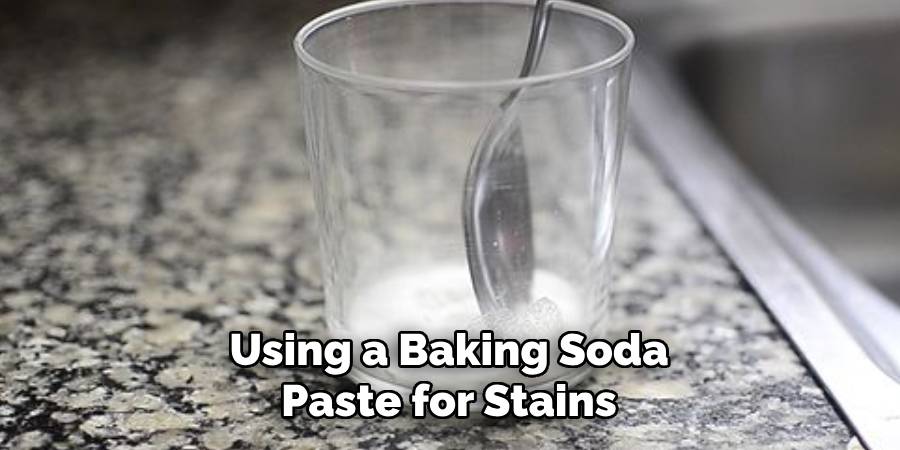
Baking soda can be an effective and gentle cleaning aid for stubborn stains. The method varies depending on the type of stain you’re dealing with. For oil-based stains, mix baking soda with water to form a paste. For water-based stains, mix baking soda with hydrogen peroxide instead. Apply the paste directly to the stain, then cover it with plastic wrap to moisten the area. Allow the paste to sit undisturbed for 24 hours before wiping it clean with a damp cloth. This process helps to lift and eliminate even the most persistent discoloration without harming the granite surface.
Disinfecting Granite Without Damaging the Sealant
To maintain the hygiene of your granite countertops, it’s essential to disinfect regularly while preserving the protective sealant. A 50/50 mixture of water and isopropyl alcohol offers a safe and effective way to sanitize surfaces. Spray the solution onto the granite, then clean it with a soft cloth. Be sure to avoid using bleach, vinegar-based cleaners, or acidic products, as they can degrade the sealant and dull the stone over time.
Removing Dried-On Grime
For hard-to-remove grime or dried-on residues, use a plastic scraper to gently lift the debris without scratching the granite. Take care to work at a low angle and use minimal pressure. Once the residue is removed, clean the area with a mixture of warm water and a mild dish soap, wiping the surface thoroughly to restore its smooth, polished finish. Following these techniques can effectively address deep cleaning challenges while preserving your granite countertops’ pristine quality.
Sealing Granite Countertops
Why Sealing is Necessary
Sealing granite countertops is crucial for maintaining their beauty and durability. Granite, being a natural stone, is porous, meaning it can absorb liquids if left unsealed, which may lead to stains and discoloration over time. A proper sealant acts as a barrier, preventing liquid absorption and protecting the countertop from spills such as wine, oil, or coffee. Beyond preventing stains, sealing enhances the longevity of the granite and preserves its stunning shine, ensuring the surface maintains its polished and elegant appearance.
How to Check if Your Granite Needs Sealing
It’s easy to determine whether your granite countertops require resealing. Perform a simple water test by pouring a few drops of water on the surface and waiting 10-15 minutes. If the water begins to absorb into the stone and darken the area, it’s time to reseal the granite. This quick assessment can help you efficiently maintain your countertop while avoiding unnecessary sealing.
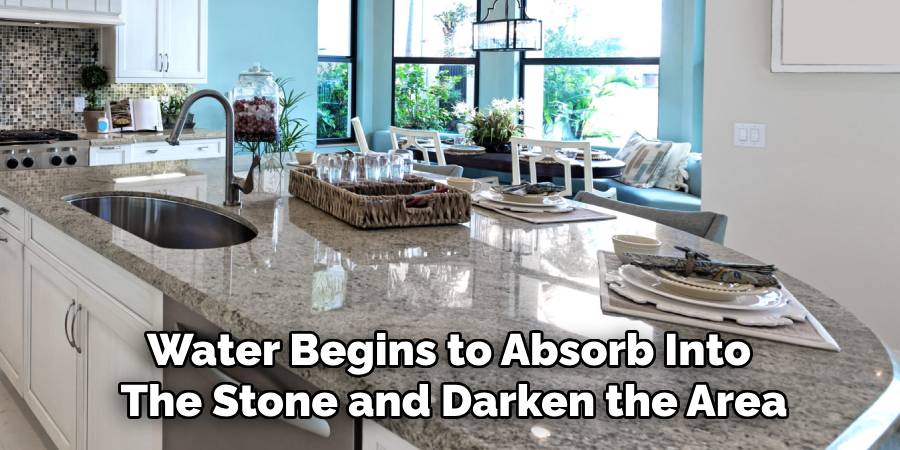
How to Seal Granite Properly
Sealing granite is a straightforward process if done correctly. Begin by selecting a high-quality penetrating granite sealer to protect the surface while allowing the stone to breathe naturally. Before applying the sealer, ensure the countertop is thoroughly cleaned and free of debris or grease. Use a soft cloth or applicator to apply the sealer evenly, allowing it to absorb into the stone.
After a few minutes, wipe off any excess product to achieve a smooth finish. Allow the countertop to dry completely before using the surface, ensuring the sealant sets properly and maximizes its protective effect. Repeating this process periodically will help keep your granite countertops in pristine condition.
Preventing Damage and Wear
Granite countertops are durable, but taking certain precautions will help maintain their beauty and longevity. Following these recommendations can significantly reduce the risk of damage or wear.
Avoid Placing Hot Pans Directly on the Granite
Always use trivets or hot pads when placing hot pots and pans on granite surfaces. Direct contact with extreme heat can cause thermal shock, potentially resulting in cracks or discoloration.
Use Cutting Boards Instead of Cutting Directly on Granite
Avoid cutting directly on your granite countertop, as this can leave scratches and dull the surface over time. Using a cutting board not only protects the granite but also preserves the sharpness of your knives.
Keep Acidic and Oily Substances Away
Citrus juices, vinegar, and other acidic substances can etch or erode the surface’s sealant, while oils can leave stubborn stains. It’s essential to wipe up spills promptly to prevent long-term damage.
Use Coasters Under Beverages
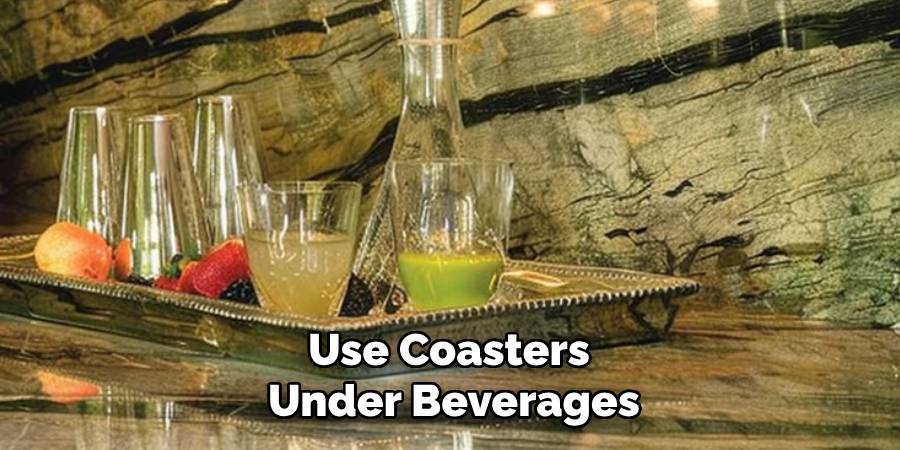
Placing coasters under mugs, glasses, and bottles can help prevent water rings and etching from prolonged exposure to moisture or acidic drinks. This small step can make a big difference in preserving your granite’s flawless appearance.
Polishing Granite for a Lasting Shine
Keeping your granite surfaces looking sleek and glossy involves incorporating a regular polishing routine. To achieve the best results, begin by selecting a granite-safe polish. You can opt for a commercial granite polish explicitly designed for stone surfaces, or create your own mixture by combining warm water with isopropyl alcohol. Apply the solution sparingly and gently buff the surface with a microfiber cloth, ensuring a streak-free, even shine.
It’s important to avoid wax-based polishes, as they can lead to buildup over time. This accumulation may actually dull the surface rather than enhancing its natural luster. Always read the label on any product to confirm its suitability for granite.
Polishing your granite surfaces once a month is sufficient to maintain their glossy finish and prevent them from appearing dull or worn. This consistent upkeep ensures your countertops, tables, or other granite features continue to impress with their enduring beauty. By integrating proper polishing techniques into your care routine, you can preserve the elegance of your granite surfaces for years to come.
Common Mistakes to Avoid
When caring for granite surfaces, certain practices can inadvertently cause damage, diminishing their longevity and beauty. One common mistake is using vinegar, lemon juice, or ammonia-based cleaners. While these substances may seem harmless and effective, they are highly acidic and can break down the protective sealant on granite, leaving the stone vulnerable to stains and erosion. Always opt for pH-neutral cleaning solutions specifically designed for stone surfaces to ensure proper care.
Another frequent oversight is skipping regular sealing. Granite is naturally porous, so sealing it periodically is crucial to prevent stains, water absorption, and potential long-term damage. Neglecting this step can leave your granite prone to discoloration and harder-to-remove blemishes. Make sealing a regular part of your maintenance routine to safeguard the surface.
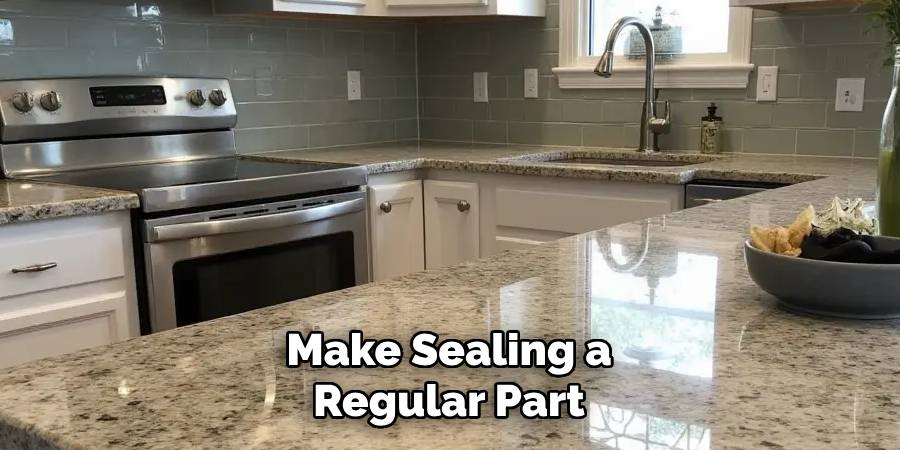
Lastly, ignoring small cracks or chips can lead to significant structural problems over time. These minor imperfections may worsen with everyday use, exposing the granite to damage further. Promptly addressing and repairing any chips or cracks with suitable products or professional assistance can prevent costly repairs in the future. By avoiding these common mistakes, you can ensure that your granite remains pristine, providing a durable and sophisticated touch to your space.
Conclusion
Maintaining the pristine condition of granite countertops requires consistent effort and attention to detail. Daily cleaning with a pH-neutral solution prevents buildup and keeps the surface shining. Prompt stain removal, regular sealing to block moisture, and occasional polishing are vital in preserving its durability and elegance.
Preventative care is essential in extending the lifespan of your countertops, preventing costly repairs and ensuring their lasting appeal. By understanding “how to maintain granite countertops” through these simple yet effective practices, you can enjoy their timeless beauty and functionality as a stunning addition to your home for years to come.
Professional Focus
Angela Ervin, a former interior designer turned blogger, specializes in kitchen design and renovations. Through her website, she blends her passion for cooking with design expertise, sharing practical and creative ideas. Known for balancing functionality and beauty, Angela’s insightful content has made her a trusted voice in home design and lifestyle.
About the Author
Angela Ervin, an experienced interior designer and blogger, combines her passion for kitchen renovations with storytelling. Living in Petersburg with her family, she enjoys cooking and testing her projects firsthand. Known for her humor and relatable style, Angela shares creative, functional design insights through her content, making her a trusted voice in home design.
Education History
University: Virginia Commonwealth University
Degree: Bachelor of Fine Arts (BFA) in Interior Design
- Angela’s education at VCU focused on mastering core interior design principles, including spatial planning, color theory, materials selection, and sustainable design practices.
- She gained hands-on experience through studio projects and collaborative design exercises, which honed her ability to create functional and aesthetically pleasing environments.
- Her coursework also emphasized problem-solving and practical applications of design, preparing her for real-world projects like her self-directed kitchen renovations.
- The program’s strong foundation in both technical skills and creative expression shaped Angela’s ability to seamlessly integrate form and function in her work.
